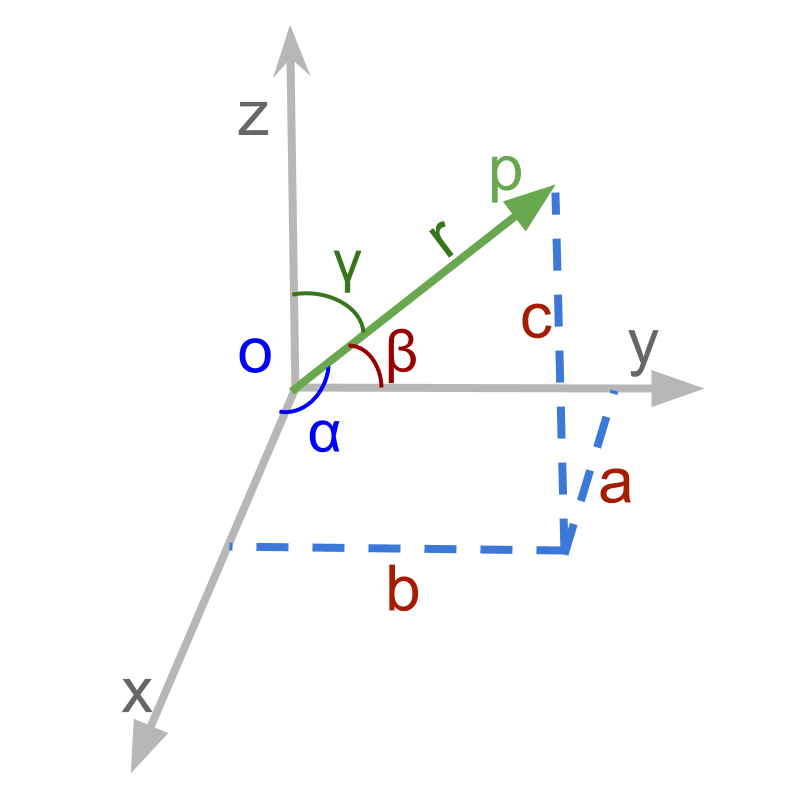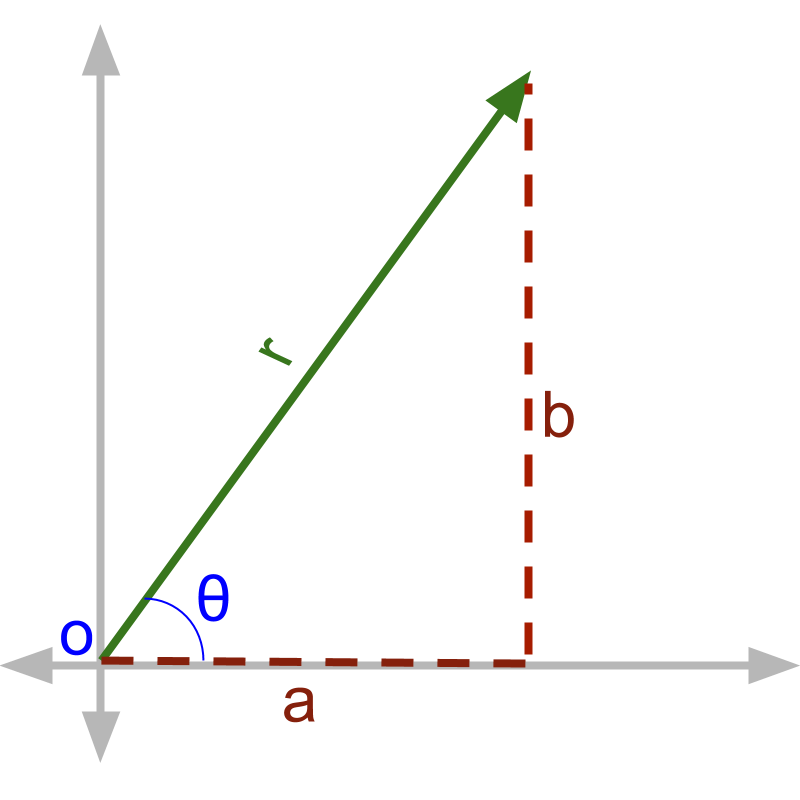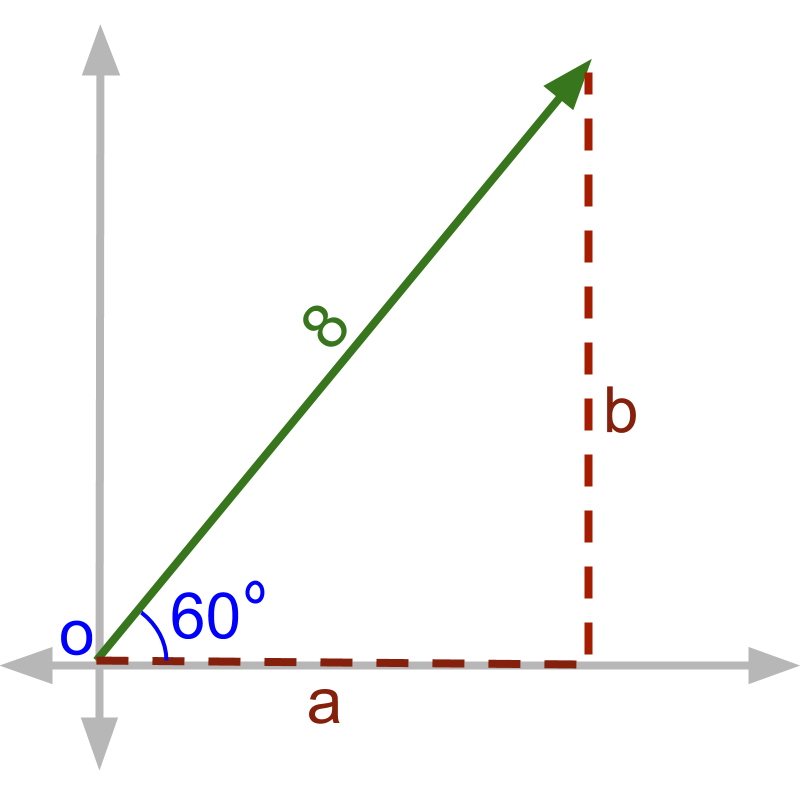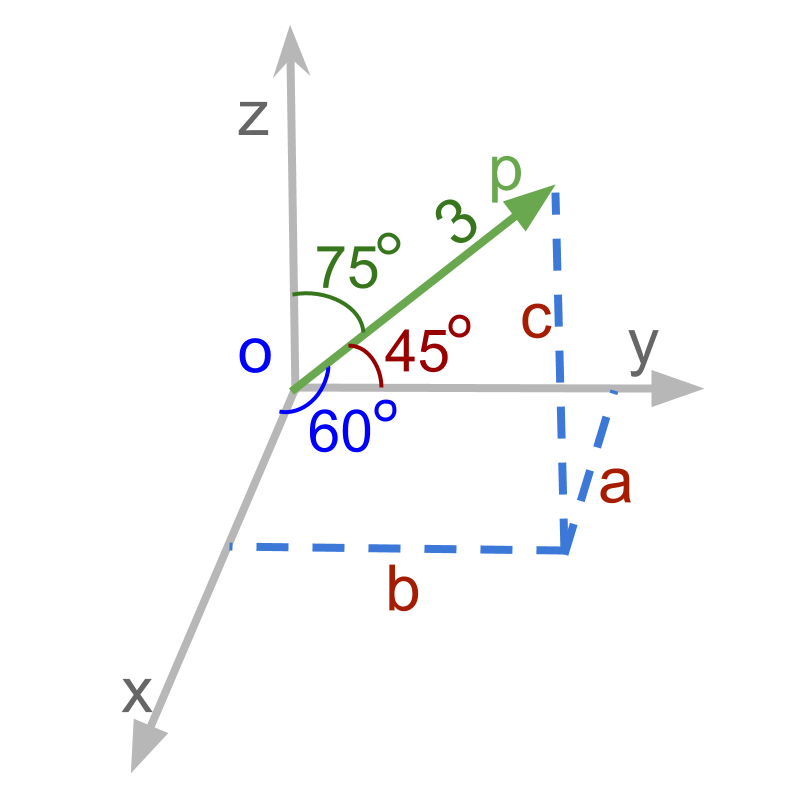
what you'll learn...
Overview
Directional Cosine
 » Directional cosines:
» Directional cosines:
→ makes angles with -axes respectively
→
→
→
alternate representation
'cosine ' of an angle is 'the ratio of adjacent side (adjacent to the given angle) to the hypotenuse in a right angled triangle'.
While referring to vector quantities, we use the form that specifies the components along the axes. eg: specifies the component along axis is , the component along axis is , and the component along axis is .
The alternate representation to component form is to specify magnitude and angles made by the vector on the axes. This has the necessary information about the vector.

To describe the vector shown in the figure, if ' and ' are available we can derive the vector form .

It is noted that the values of and in the figure are ' and '.

The same in 3D, to describe the vector shown in figure, the vector is completely defined by ' and '. If these three parameters are available we can derive the vector notation .
Note that the third angle can be derived from the other two angles.

Given the vector in figure, values of , , and are derived as ; ;
When a vector with magnitude and angles is given, the coordinate form of the vector is
, , are called the directional cosines of the vector.
Directional cosines: Given that a vector makes angles with -axes respectively, then the directional cosines of the vector are
Directional cosines are the ratio of "projections on to an axes" to "the magnitude".
The representation of vectors in the component form is
Directional cosines along with magnitude provide an alternate representation of a vector.
Directional cosines make Unit Vector: For a given vector the directional cosine vector is the unit vector in the direction of the given vector. Note that
This also implies that
examples
What is the magnitude of the directional cosines vector : ?
The answer is ''. The magnitude = , which evaluates to 1.
Find the direction cosines of a line which makes equal angles with the coordinate axes.
The answer is
OR
From the question, we know that and We know the property of directional cosines
If a line makes angles with the x, y and z-axes respectively, find its direction cosines.
The answer is ''.
Find the directional cosine of the vector .
magnitude of the vector = 4
So directional cosines are
summary
Directional cosines: Given that a vector makes angles with -axes respectively, then the directional cosines of the vector are
Directional cosines are the ratio of "projections on to an axes" to "the magnitude".
Directional cosines make Unit Vector: For a given vector the directional cosine vector is the unit vector in the direction of the given vector. Note that
This also implies that
Outline
The outline of material to learn vector-algebra is as follows.
Note: Click here for detailed outline of vector-algebra.
• Introduction to Vectors
→ Introducing Vectors
→ Representation of Vectors
• Basic Properties of Vectors
→ Magnitude of Vectors
→ Types of Vectors
→ Properties of Magnitude
• Vectors & Coordinate Geometry
→ Vectors & Coordinate Geometry
→ Position Vector of a point
→ Directional Cosine
• Role of Direction in Vector Arithmetics
→ Vector Arithmetics
→ Understanding Direction of Vectors
• Vector Addition
→ Vector Additin : First Principles
→ Vector Addition : Component Form
→ Triangular Law
→ Parallelogram Law
• Multiplication of Vector by Scalar
→ Scalar Multiplication
→ Standard Unit Vectors
→ Vector as Sum of Vectors
→ Vector Component Form
• Vector Dot Product
→ Introduction to Vector Multiplication
→ Cause-Effect-Relation
→ Dot Product : First Principles
→ Dot Product : Projection Form
→ Dot Product : Component Form
→ Dot Product With Direction
• Vector Cross Product
→ Vector Multiplication : Cross Product
→ Cross Product : First Principles
→ Cross Product : Area of Parallelogram
→ Cross Product : Component Form
→ Cross Product : Direction Removed